Order Rhizostomae Genus Nemopilema Higher classification Nemopilema | Scientific name Nemopilema nomurai Rank Species | |
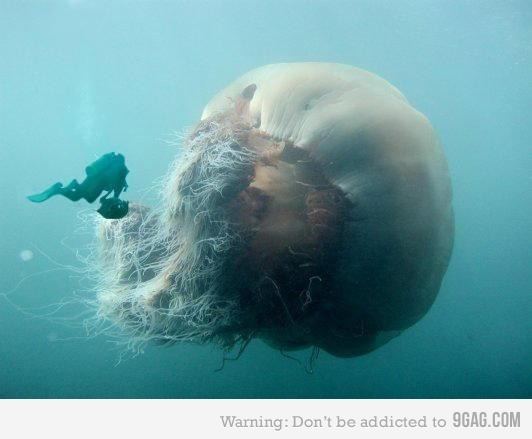 | ||
Similar Lion's mane jell, Moon jelly, Scyphozoa, Jellyfish, Rhizostomae | ||
Nomura's Jellyfish (エチゼンクラゲ, echizen kurage, Nemopilema nomurai) is a very large rhizostomae jellyfish, in the same size class as the lion's mane jellyfish, the largest cnidarian in the world. It is edible but not considered high quality.
Contents
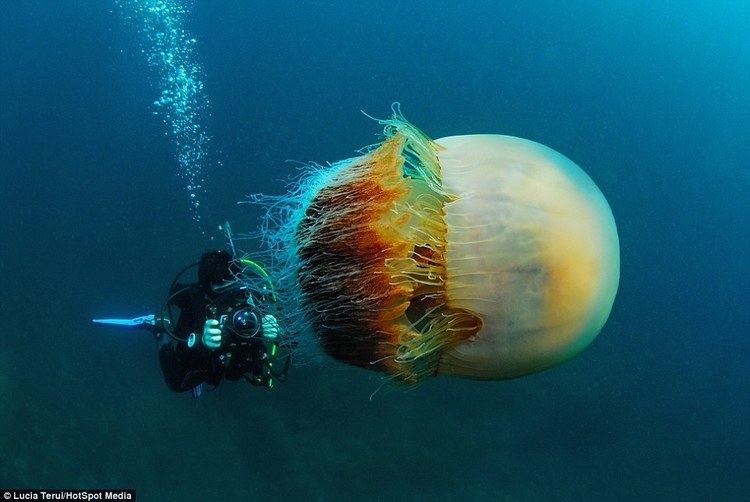
Nomura s jellyfish
Overview
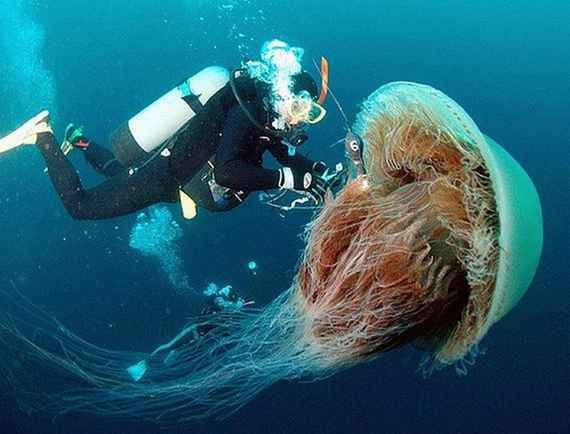
The diameter when fully grown is slightly greater than the height of an average man. The species was named in tribute to Mr. Kan'ichi Nomura (C18–C19), Director General of the Fukui Prefectural Fisheries Experimental Station, who in early December 1921 sent a specimen in a 72-litre wooden tank to Professor Kishinouye, who found that it was unknown and spent some time at the station to study living specimens.
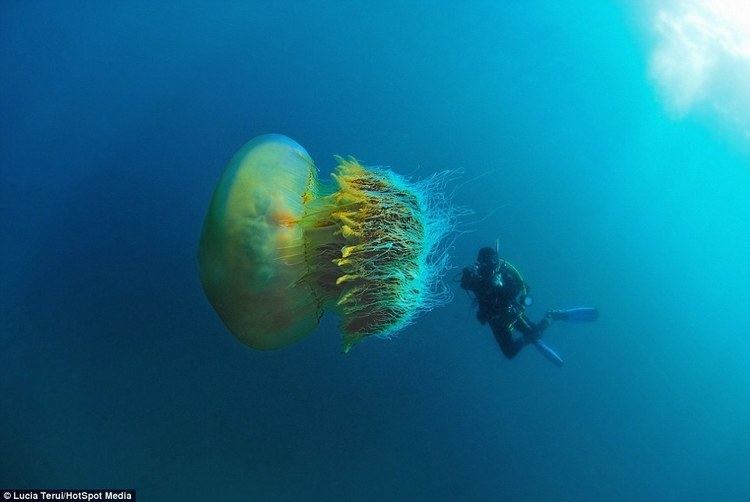
Growing up to 2 m (6.6 ft) in diameter and weighing up to 200 kg (440 lb), Nomura's Jellyfish reside primarily in the waters between China and Japan, primarily centralized in the Yellow Sea and East China Sea. Population blooms appear to be increasing with frequency in the past 20 years. Possible reasons for the population increase in Nomura's Jellyfish include climate change, overfishing, and coastal modification adding substrate for asexually producing polyps.
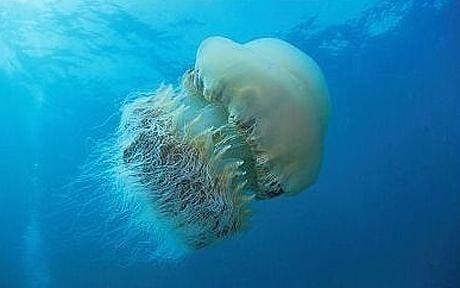
In 2009, a 10-tonne (11 ton) fishing trawler, the Diasan Shinsho-maru, capsized off Chiba on Tokyo Bay as its three-man crew tried to haul in a net containing dozens of Nomura's Jellyfish; the three were rescued by another trawler.
Life History
The life cycle of Nemopilema nomurai is very similar to that of other rhizostomes. Nomura’s jellyfish are normally found in the Yellow Sea and populations are generally maintained there year round. During June and July changes in the water salinity lead to the expatriation of larval stage jellyfish via the Tsushima strait. In 2005 the largest blooms were in late October. It is noted that this species of jellyfish in six months can grow from the size of a grain of rice to greater than 6 feet wide.
Ecology
While jellyfish blooms have been documented in the Sea of Japan since the writing of their first history book, the blooms of Nemopilema nomurai have been more recent. Since the beginning of the 20th century the instances of N. nomurai explosive blooms have been on the increase, a fact not helped by their size – being one of the largest species of jellyfish recorded. This species of jellyfish feeds mostly on zooplankton in all stages of life, feeding on larger fish as they grow larger. Their only predators consist of swordfish, tuna, sunfish, leatherback turtles and humans.
Uses
Since the recent increase in blooms, research has been underway to find uses for the Nomura’s jellyfish. Each year this species costs Japanese fisheries serious damage and so an economic solution may be found in converting this invasion into a resource.
As food
The Japanese company Tango Jersey Dairy produces a vanilla and jellyfish ice cream using Nomura's jellyfish.
Medical
One study sought to use the mucin of the Nomura’s jellyfish to treat joint disease such as osteoarthritis.
Agriculture
Like many invasive species, such as the cane toad, a simple solution is to take the species and convert them into fertilizer. Another study aimed at using an aqueous menthol extract of dried medusa to inhibit the growth of weed seedlings when added to soil.
